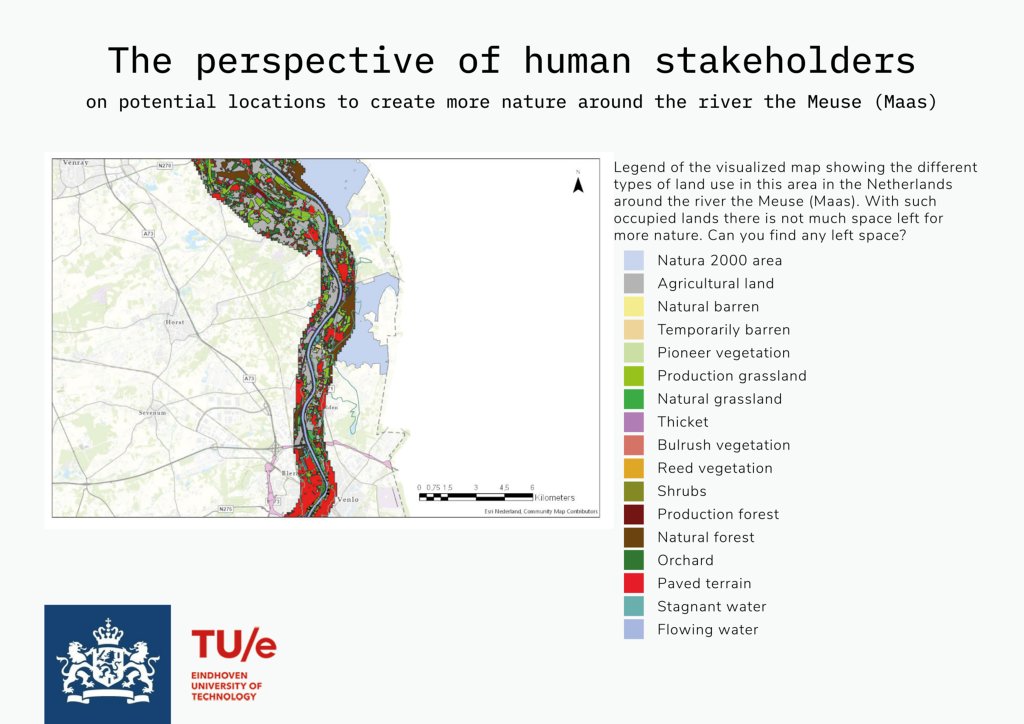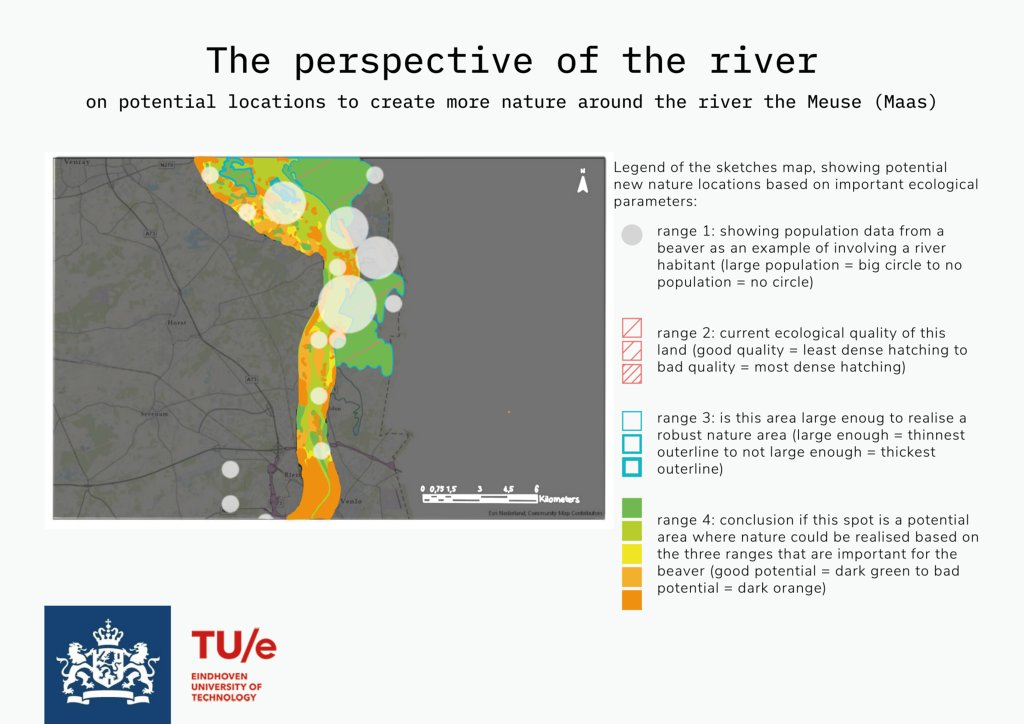This TU/e master graduation project was executed in collaboration with Rijkswaterstaat. The context is a coming together of a practical national political program and the philosophical Staying with the Trouble from Donna J. Haraway.
The national political program
The context is the national program: Programmatic Approach to Great Waters (PAGW). PAGW was initiated with the goal to increase the biodiversity of the large waters in the Netherlands. Rijkswaterstaat executes PAGW together with Staatsbosbeheer and RVO (=Netherlands Enterprise Agency). But how does Rijkswaterstaat increase the biodiversity of an ecosystem? By restoring habitats around these waters and connecting all of these habitats as a network. In this project there is zoomed in on the river the Meuse due to the high water in July ‘21
The philosophical movement of multispecies involvement
This master graduation project builds upon Donna J Haraway’s philosophical call for Staying with the Trouble [4]. This philosophy is also visible in the international Rights of Nature movement where nature entities like rivers are given a voice to speak for themselves. This voice is often translated by involved human parties. How can I represent the voice of the river the Meuse?
REFERENCES
- Rijkswaterstaat - about us. Retrieved December 28, 2021 from https://www.rijkswaterstaat.nl/en/about-us
- 2021. Werken aan een levende delta met de Programmatische Aanpak Grote Wateren. Retrieved December 28, 2021 from https://www.pagw.nl
- W. van Heusden, H. Sluiter, M. Tijnagel, W. Vercruijsse, and A. Zuidhof. 2021. Ecologische Systeemopgave PAGW-Rivieren.
- Donna J Haraway. 2016. Staying with the trouble: Making kin in the Chthulucene. Duke University Press.





